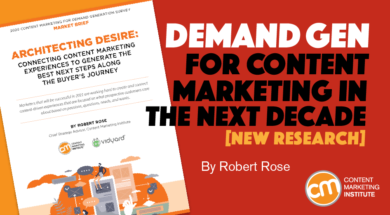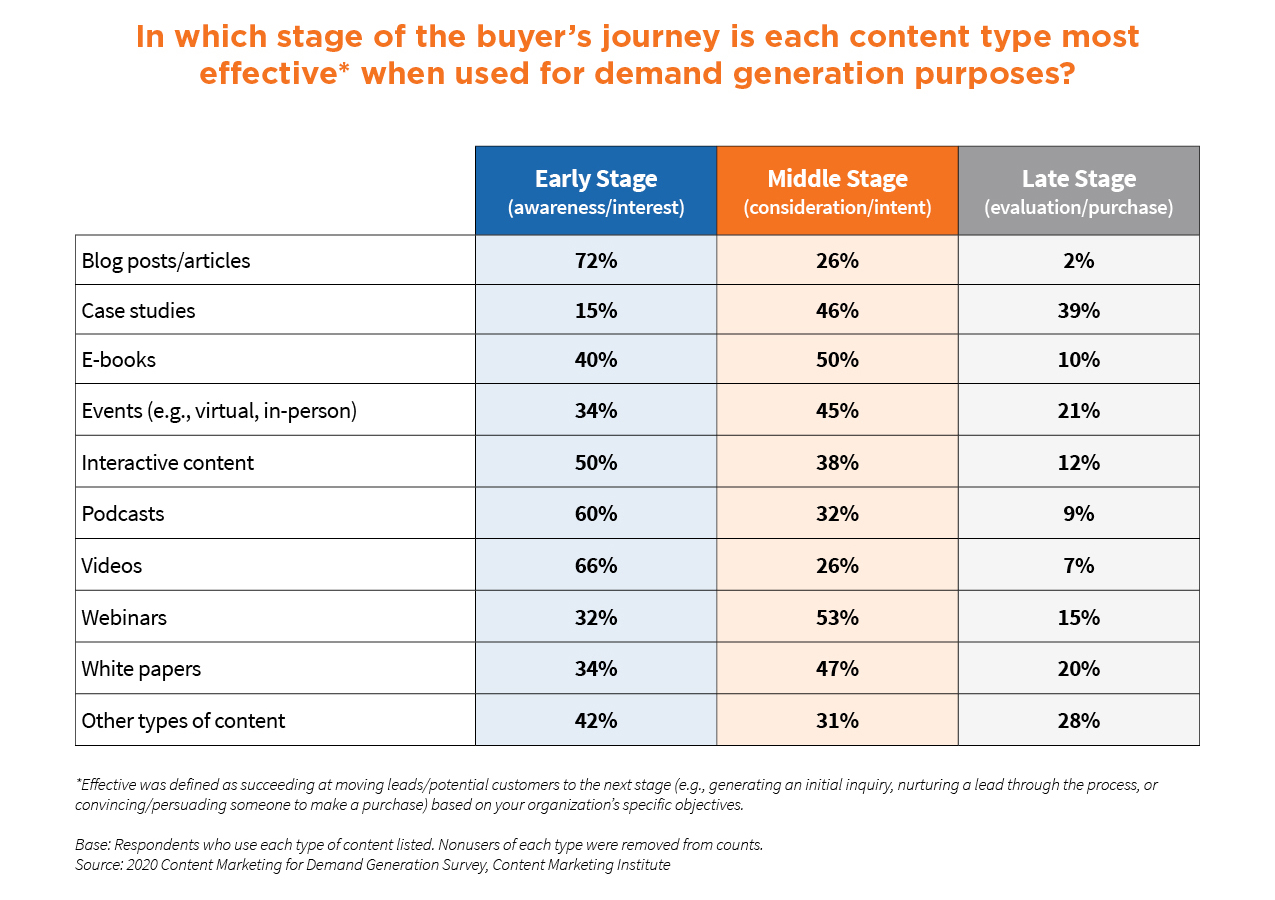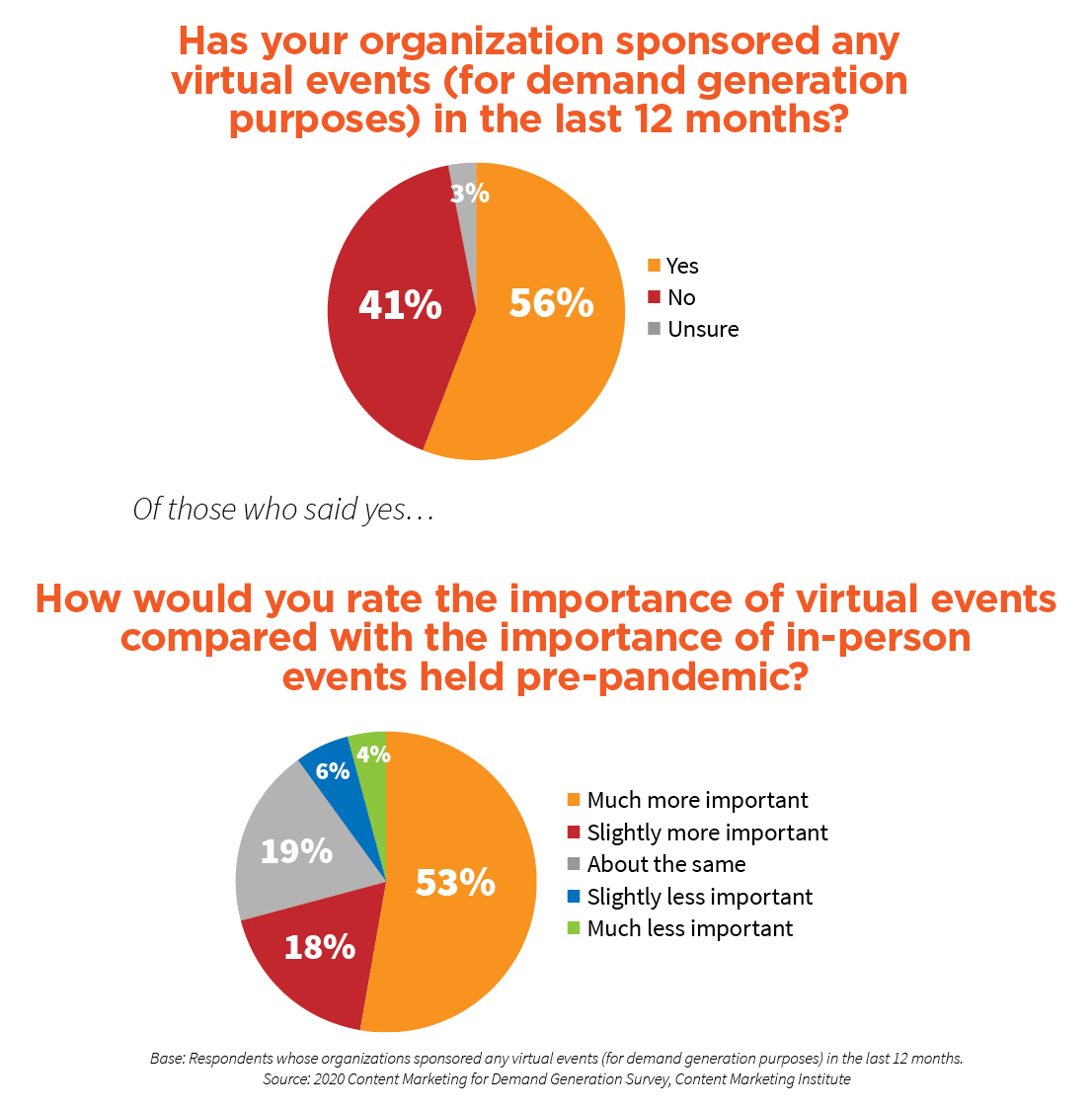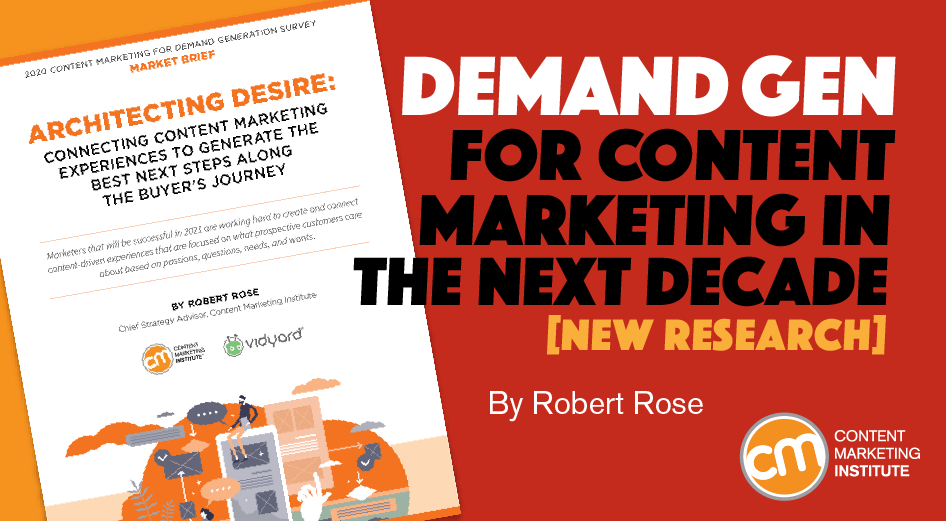 We can agree 2020 was disruptive, weird, and put us all into new territory regarding our demand generation strategies. If we thought digital marketing was changing fast as 2019 ushered in the ’20s, well, 2020 said, “Hold my beer.”
We can agree 2020 was disruptive, weird, and put us all into new territory regarding our demand generation strategies. If we thought digital marketing was changing fast as 2019 ushered in the ’20s, well, 2020 said, “Hold my beer.”
We not only have experienced increased pressure to create trustworthy, differentiated content but to boost top-of-funnel demand for our products and services. For many businesses, there’s been an exponential increase in the need to be more digital, develop more direct relationships with customers, and do it all from the confines of remote work.
Evolving the evolution
The goals leading up to 2020 were to create content that could be found through search and to satisfy the information needs of prospective customers. Well, guess what? That’s no longer enough. In 2021, we must inspire all new questions and desires and serve the best next experiences to satisfy them.
In 2021, serve best next experiences to satisfy your audiences, says @Robert_Rose via @CMIContent. #DemandGen #Research Click To TweetPersonal and perhaps personalized (yes, they are different) digital experiences are now critical. In many ways, our content now has to serve as a proxy for the physical experiences we delivered to prospective buyers. From in-person conferences to retail stores, from meetings where we present PowerPoint slides in a conference room to the quick meeting at a café, creating demand has been changed, and those changes will last long after we get back to some level of normalcy.
Today’s digital experiences are managed and fed by controlled and uncontrolled content from the likes of influencers, executives, marketing, sales, customer service managers, and even other customers.
So, the myriad digital content experiences created to generate demand for products and services are inexorably connected and directly reflect (well or poorly) on your business’ ability to develop cohesive, integrated value.
Put simply: Getting content right in 2021? It’s important.
Getting #content right in 2021? It’s important, says @Robert_Rose via @CMIContent. #DemandGen #Research Click To TweetNew focus: demand generation through connected experiences
In CMI’s 2019 Content Marketing for Demand Generation Survey report, we discussed the challenges of internal siloes. I recalled the quote from Steven Sinofsky, the former president of the Windows division at Microsoft, who warned us to “not ship the org chart.” The idea is still relevant. You are destined to communicate in the way that your company is organized.
The lesson is that you should de-silo and organize your company to enable the creation of consistent and valuable communications with your audiences. Our research illustrated that while progress has been made, many demand generation strategies struggle because of their organization’s siloed nature.
While progress has been made, many #DemandGen strategies struggle because of their organization’s siloed nature, says @Robert_Rose via @CMIContent. #Research Click To TweetIn 2021, this challenge certainly has not gone away and is exacerbated by the pandemic-related “lockdowns” every company has had to manage. Add to that the increased pressure on demand generation marketers to more fully connect digital experiences to gain better insight into their prospective customer’s needs and wants.
We, too, had our 2020 challenges. Our demand generation survey came later in the year, but perhaps that gives us a better window into the evolution within the evolution.
In August 2020, the CMI research team conducted its third annual Content Marketing for Demand Generation Survey sponsored by Vidyard. A total of 229 responses (representing 24 countries) were qualified for analysis.
Many of the findings mirrored what we found in 2019. However, demand gen marketers are much more focused on determining how to navigate the challenges of 2020 (and now 2021) than changing their approach to use content in demand generation programs. Put simply: The focus is on the content – what to create and where to publish it – rather than on how to operate content-related demand generation within the business.
The focus is on the #content – what to create and where to publish it – rather than on how to operate content-related #DemandGen within the business, says @Robert_Rose via @CMIContent. #Research Click To TweetFor example, the only notable difference from the previous year in content types effectiveness based on the buying stages at various stages of the buying journey was e-books. They rated more effective in the middle stage (50%) than in the early stage (40%). The opposite was true the previous year when e-books were rated more effective in the early stage (56%) than in the middle stage (35%). This finding suggests demand generation marketers are using e-books further down the funnel to serve meatier content during the nurturing phase of the customer journey.

As we noted in this research report, 2020 was a “year in the upside-down” (to borrow from Netflix’s Stranger Things series). For example, virtual events such as webinars and conferences took a big leap up in importance. Slightly more than half (56%) had sponsored virtual events for demand generation purposes in the last 12 months. And 71% of that group said those virtual events were either slightly or much more important than pre-pandemic in-person events.

HANDPICKED RELATED CONTENT:
The race begins – again
Welcome to 2021. The race is on. Again.
We know the track, we know the pit stops, and we know who the other racers are. The only thing that’s different is that we lost a year in between.
Businesses successful in 2021 are working hard to create and connect content-driven experiences focused on what prospective customers care about based on passions, questions, needs, and wants. They are architecting desire into every experience.
Successful businesses in 2021 architect desire into every #content experience with prospects, says @Robert_Rose via @CMIContent. #DemandGen #Research Click To TweetMore importantly, they are using technology to connect those digital experiences to get better insight into their customer’s journey and fueling a full, de-siloed organizational capability to create better, more compelling content as a result.
This new research can be helpful as you plot your business’ race. If content marketing is to be a meaningful – and growing – part of your company’s demand generation operation, you’ve got to invest in it like any other vital business strategy. This research can be some of the fuel for that investment case.
We know this.
So, what’s different?
Your competitor may have already made their business case. The C-suite may no longer need to be convinced that this pivot to content marketing is a good idea. You need to get to it.
Perhaps we’ll see 2020 as a time when all the smoke and hype about content marketing for demand generation wafted away, and we really started to see it work. Now, all we have to do is evolve to be the best in the world.
That’s no small task. But it’s time. The race is on.
Cover image by Joseph Kalinowski/Content Marketing Institute

